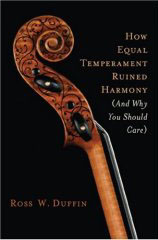Bard College music and film building (center):

The parking lot on right is student dorm parking. I park right next to the building in an area that’s shadowed here: can’t tell whether my car’s there. The photo’s about a year old because it was taken in winter and includes the new music building addition but not the extension being built on the Curatorial Studies Center across the field (top of the photo).
Gain a new perspective here.
UPDATE: On closer inspection, this photo is two years old, because the parking lot isn’t finished yet and there are construction trucks all around. Why don’t they update more often? The New Orleans photos look pre-Katrina, too.

 However, I should have realized that the brilliance of Taruskin’s writing would have made it difficult to put down regardless of topic, and the book has a tremendous amount to teach not only about Stravinsky but about musical progress in general. One of Taruskin’s tremendous strengths as a musicologist, beyond the panoramic sweep of his research, is his theoretical ability to correctly grasp and describe compositional process. Take a look at the following statement about Stravinsky’s youthful Piano Sonata in f#:
However, I should have realized that the brilliance of Taruskin’s writing would have made it difficult to put down regardless of topic, and the book has a tremendous amount to teach not only about Stravinsky but about musical progress in general. One of Taruskin’s tremendous strengths as a musicologist, beyond the panoramic sweep of his research, is his theoretical ability to correctly grasp and describe compositional process. Take a look at the following statement about Stravinsky’s youthful Piano Sonata in f#: Duffin apparently started the book as a much-needed antidote to Stuart Isacoff’s mendacious and unaccountably popular Temperament: The Idea that Solved Music’s Greatest Riddle of several years back. Isacoff’s populist tome was a heady celebration of the status quo: “hey, 12 equal steps to the octave is the perfect tuning, aren’t we glad they came up with it, no reason to ever consider anything else!” To argue that, he had to sweep a mountain of inconvenient acoustic phenomena under the rug. (I wrote a Village Voice review saying so, and, comically, Isacoff wrote a letter to the editor excoriating me as – I quote from memory – “one of those dogmatic pedants who can only imagine doing a thing one way.” Of course, the “one way” I pedantically insisted on was allowing and exploring thousands of different tunings; the open-minded route he so generously opened up was to impose one bland, invariant scale on all mankind’s music for the rest of eternity.) Strangely for so esoteric a topic, Isacoff’s Temperament got a tsunami of undeserved publicity.
Duffin apparently started the book as a much-needed antidote to Stuart Isacoff’s mendacious and unaccountably popular Temperament: The Idea that Solved Music’s Greatest Riddle of several years back. Isacoff’s populist tome was a heady celebration of the status quo: “hey, 12 equal steps to the octave is the perfect tuning, aren’t we glad they came up with it, no reason to ever consider anything else!” To argue that, he had to sweep a mountain of inconvenient acoustic phenomena under the rug. (I wrote a Village Voice review saying so, and, comically, Isacoff wrote a letter to the editor excoriating me as – I quote from memory – “one of those dogmatic pedants who can only imagine doing a thing one way.” Of course, the “one way” I pedantically insisted on was allowing and exploring thousands of different tunings; the open-minded route he so generously opened up was to impose one bland, invariant scale on all mankind’s music for the rest of eternity.) Strangely for so esoteric a topic, Isacoff’s Temperament got a tsunami of undeserved publicity. Through some passages of Feldman’s late works, it is remarkable – too remarkable for mere coincidence – how often his textures change at the end of a page. It doesn’t seem true at the beginnings of pieces, which will often be seamless. But at some point in a work, he will begin to settle into a rhythm. A texture or pitch set will be consistent for a page, and then the next page will have a different texture and pitch set, and the next page a different one still, and so on. It is almost as though he treated the page visually, as a whole, and every time he turned to a new page, thought, “Now for something new.”
Through some passages of Feldman’s late works, it is remarkable – too remarkable for mere coincidence – how often his textures change at the end of a page. It doesn’t seem true at the beginnings of pieces, which will often be seamless. But at some point in a work, he will begin to settle into a rhythm. A texture or pitch set will be consistent for a page, and then the next page will have a different texture and pitch set, and the next page a different one still, and so on. It is almost as though he treated the page visually, as a whole, and every time he turned to a new page, thought, “Now for something new.”